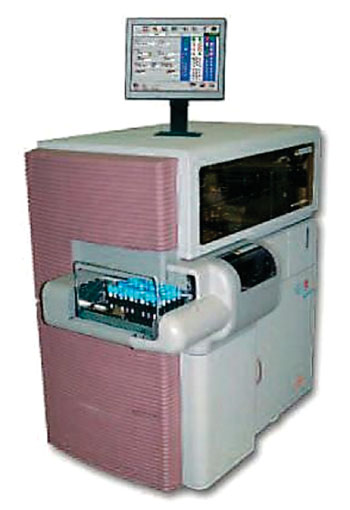Preoperative In-Vitro Platelet Function Tests Investigated
By LabMedica International staff writers
Posted on 11 Nov 2016
It is essential to predict the bleeding risk in patients undergoing functional endoscopic sinus surgery (FESS) and to evaluate the adequacy of primary hemostasis, preoperative hemostatic screening tests are used.Posted on 11 Nov 2016
Operation without any hemostatic screening test results may lead to increased morbidity and mortality. In addition, perioperative hemorrhage may require the administration of blood products to correct a deficit of red blood cells or underlying or resulting coagulopathy. The risks of blood transfusion also cause increased morbidity and mortality.

Image: The STA-R automatic coagulation analyzer (Photo courtesy of Diagnostica Stago).
Medical scientists at the Catholic University of Daegu School of Medicine (Daegu, Republic of Korea) reviewed the medical records of 90 patients without bleeding histories that had undergone FESS from March 2013 to June 2014. More than 200 mL of blood loss was defined as moderate bleeding during surgery. With respect to bleeding during surgery, they determined the sensitivity, specificity, negative predictive value (NPV) and positive predictive value (PPV) of collagen/epinephrine (CT-epi), prothrombin time (PT), international normalized ratio (INR), and activated partial thromboplastin time (aPTT) and bleeding during FESS.
The patient population was classified into prolonged and normal groups according to the laboratory results of CT-epi (PFA-100), PT, INR and aPTT (STA-R analyzer, Diagnostica Stago, Asnières Sur Seine, France). All CT-epi values greater than 192 seconds, PT value greater than 15.0 seconds, INR values greater than 1.2 and aPTT values greater than 45.0 seconds were defined as prolonged, and all results below these values were defined as normal.
Of the 90 patients, 17 (18.9%) patients had preoperative prolonged CT values and three (17.6%) patients had bleeding. In comparison, five (6.8%) of the 73 (81.1%) patients who had undergone FESS with preoperative normal PFA values experienced bleeding. On the other hand, the two patients with prolonged PT values and the three with prolonged INR values or the one with prolonged with PTT values had no bleeding episode. Preoperative CT had low sensitivity (44.4%) and PPV (23.5%).
The authors concluded that during preoperative period, the hemostatic screening may not be helpful to detect the bleeding tendency in adult patients undergoing FESS. Routine measurement of CT-epi, PT, INR and aPTT for preoperative screening may not be recommended for FESS patients. The study was published on October 21, 2016, in the Journal of Blood Medicine.
Related Links:
Catholic University of Daegu School of Medicine
Diagnostica Stago









 assay.jpg)



